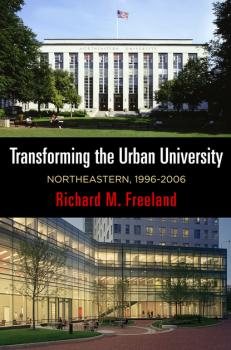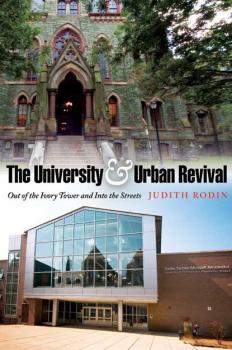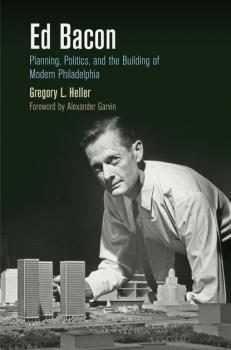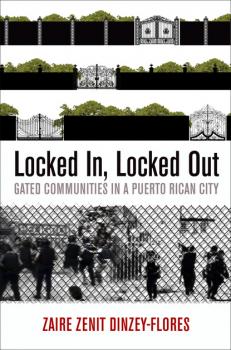ТОП просматриваемых книг сайта:
The City in the Twenty-First Century
Скачать книги из серии The City in the Twenty-First CenturyАннотация
In Transforming the Urban University , Richard M. Freeland reviews how Northeastern University in Boston, historically an access-oriented, private urban university serving commuter students from modest backgrounds and characterized by limited academic ambitions and local reach, transformed itself into a selective, national, and residential research university. Having served as president during a critical decade in this transition, Freeland recounts the school's efforts to retain key features from Northeastern's urban history—an emphasis on undergraduate teaching and learning, a curriculum focused on preparing students for the workplace, its signature program of cooperative education, and its broad involvement in the life of the city—while at the same time raising admission standards, recruiting students on a regional and national basis, improving graduation rates, expanding opportunities for research and graduate education and dramatically improving its U.S. News ranking. Freeland situates the Northeastern story within the evolving context of urban higher education as well as broader trends among American universities during the second half of the twentieth century. He documents the way Northeastern maintained its historic values while making innovative use of modern marketing techniques to meet the competitive conditions of the academic marketplace. He shows how Northeastern rejected the standard model of the modern research university and instead reinvented itself as a new kind of urban university: making excellence in the undergraduate experience its top priority; stressing practice-oriented education and research; and emphasizing the academic benefits of its urban setting as well as the importance of contributing to the well-being of its host city. In chronicling Northeastern's recovery from what the school's trustees called a «near-death» experience, Freeland challenges the conventional narrative of what a university must do to achieve top-tier national status.
Iconic Planned Communities and the Challenge of Change - Группа авторов
The City in the Twenty-First CenturyАннотация
In the history of planning, the design of an entire community prior to its construction is among the oldest traditions. Iconic Planned Communities and the Challenge of Change explores the twenty-first-century fortunes of planned communities around the world. Drawing on interdisciplinary perspectives, the editors and contributors examine what happened to planned communities after their glory days had passed and they became vulnerable to pressures of growth, change, and even decline. Beginning with Robert Owen's industrial village in Scotland and concluding with Robert Davis's neotraditional resort haven in Florida, this book documents the effort to translate optimal design into sustaining a common life that works for changing circumstances and new generations of residents. Basing their approach on historical research and practical, on-the-ground considerations, the essayists argue that preservation efforts succeed best when they build upon foundational planning principles, address landscape, architecture, and social engineering together, and respect the spirit of place. Presenting twenty-three case studies located in six continents, each contributor considers how to preserve the spirit of the community and its key design elements, and the ways in which those elements can be adapted to contemporary circumstances and changing demographics. Iconic Planned Communities and the Challenge of Change espouses strategies to achieve critical resilience and emphasizes the vital connection between heritage preservation, equitable sharing of the benefits of living in these carefully designed places, and sustainable development. Communities : Bat'ovany-Partizánske, Cité Frugès, Colonel Light Gardens, Den-en Chôfu, Garbatella, Greenbelt, Hampstead Garden Suburb, Jardim América, Letchworth Garden City, Menteng, New Lanark, Pacaembú, Radburn, Riverside, Römerstadt, Sabaudia, Seaside, Soweto, Sunnyside Gardens, Tapiola, The Uplands, Welwyn Garden City, Wythenshawe. Contributors: Arnold R. Alanen, Carlos Roberto Monteiro de Andrade, Sandra Annunziata, Robert Freestone, Christine Garnaut, Isabelle Gournay, Michael Hebbert, Susan R. Henderson, James Hopkins, Steven W. Hurtt, Alena Kubova-Gauché, Jean-François Lejeune, Maria Cristina a Silva Leme, Larry McCann, Mervyn Miller, John Minnery, Angel David Nieves, John J. Pittari, Jr., Gilles Ragot, David Schuyler, Mary Corbin Sies, Christopher Silver, André Sorensen, R. Bruce Stephenson, Shun-ichi J. Watanabe.
Информация о книге
Автор произведения Группа авторов
Immigration and Metropolitan Revitalization in the United States - Группа авторов
The City in the Twenty-First CenturyАннотация
In less than a generation, the dominant image of American cities has transformed from one of crisis to revitalization. Poverty, violence, and distressed schools still make headlines, but central cities and older suburbs are attracting new residents and substantial capital investment. In most accounts, native-born empty nesters, their twentysomething children, and other educated professionals are credited as the agents of change. Yet in the past decade, policy makers and scholars across the United States have come to understand that immigrants are driving metropolitan revitalization at least as much and belong at the center of the story. Immigrants have repopulated central city neighborhoods and older suburbs, reopening shuttered storefronts and boosting housing and labor markets, in every region of the United States. Immigration and Metropolitan Revitalization in the United States is the first book to document immigrant-led revitalization, with contributions by leading scholars across the social sciences. Offering radically new perspectives on both immigration and urban revitalization and examining how immigrants have transformed big cities such as New York, Chicago, and Los Angeles, as well as newer destinations such as Nashville and the suburbs of Boston and New Jersey, the volume's contributors challenge traditional notions of revitalization, often looking at working-class communities. They explore the politics of immigration and neighborhood change, demolishing simplistic assumptions that dominate popular debates about immigration. They also show how immigrants have remade cities and regions in Latin America, Africa, and other places from which they come, linking urbanization in the United States and other parts of the world. Contributors : Kenneth Ginsburg, Marilynn S. Johnson, Michael B. Katz, Gary Painter, Robert J. Sampson, Gerardo Francisco Sandoval, A.K. Sandoval-Strausz, Thomas J. Sugrue, Rachel Van Tosh, Jacob L. Vigdor, Domenic Vitiello, Jamie Winders.
Информация о книге
Автор произведения Группа авторов
Аннотация
In the fall of 2008, the world watched in horror as the U.S. housing finance system shattered, triggering a global financial panic and ultimately the Great Recession. Now, nearly a decade later, the long and slow housing recovery has reached a critical moment. Though the housing finance system has stabilized, it remains in the hands of the federal government, leaving taxpayers exposed to the credit risk while private funding remains mostly on the sidelines. Principles of Housing Finance Reform identifies the changes necessary to modernize the housing finance system, identifying guiding principles that should underlie a rebuilt system. Contributors to the volume set out a wealth of innovative solutions that are possible within this framework, presenting proposals for long-term structural reforms that would infuse new life into the U.S. housing finance system while enhancing long-term stability. Nearly a decade after the inception of the Great Recession, reform proposals have arisen across the political spectrum. This is a moment of opportunity for rebuilding a key sector of the U.S. economy. The research in this volume represents the best thinking of policy researchers and economic experts on the challenges that lie ahead and provides a roadmap for reforms to create a system characterized by liquidity, stability, access, and sustainability. Contributors: W. Scott Frame, Meghan Grant, John Griffith, Diana Hancock, Stephanie Heller, Akash Kanojia, Patricia C. Mosser, Kevin A. Park, Wayne Passmore, Roberto G. Quercia, David Scharfstein, Phillip Swagel, Joseph Tracy, Susan M. Wachter, Dale A. Whitman, Mark A. Willis, Joshua Wright.
Аннотация
Underfunded pension liabilities threaten the fiscal stability of many cities. While Detroit's bankruptcy has dominated the headlines, the problem is widespread. With ongoing battles in many localities, policymakers are increasingly turning their attention to the legacy issues surrounding the funding of pensions. Public Pensions and City Solvency addresses this complex fiscal challenge and presents strategies to achieve financial sustainability. Writing in a direct, readable style for a professional as well as an academic audience, expert contributors provide incisive analyses and practical approaches to navigating the fiscal morass in which many cities find themselves. Richard Ravitch, former lieutenant governor of New York, writes the Foreword and Robert P. Inman and Susan M. Wachter provide the Conclusion. The book's three chapters examine the issue from different key perspectives: Joshua D. Rauh, a leading scholar in the study of unfunded pension liabilities, provides an economist's perspective; Amy B. Monahan, a renowned authority in public employee benefits law, illuminates the legal framework; and D. Roderick Kiewiet and Mathew D. McCubbins, visionary political scientists, put the crisis and its economic and legal implications into context and lay out the necessary framework for reform. The problems that arise from underfunded public pensions are only going to escalate. Public Pensions and City Solvency is a unique resource for decision-makers, policy-makers, and researchers and a timely addition to the evolving debate over what constitutes sustainable solutions. Contributors: Robert P. Inman, D. Roderick Kiewiet, Mathew D. McCubbins, Amy B. Monahan, Joshua D. Rauh, Richard Ravitch, Susan M. Wachter.
Информация о книге
Автор произведения Группа авторов
Аннотация
In the last quarter of the twentieth century, urban colleges and universities found themselves enveloped by the poverty, crime, and physical decline that afflicted American cities. Some institutions turned inward, trying to insulate themselves rather than address the problems in their own backyards. Others attempted to develop better community relations, though changes were hard to sustain. Spurred by an unprecedented crime wave in 1996, University of Pennsylvania President Judith Rodin knew that the time for urgent action had arrived, and she set a new course of proactive community engagement for her university. Her dedication to the revitalization of West Philadelphia was guided by her role not only as president but also as a woman and a mother with a deep affection for her hometown. The goal was to build capacity back into a severely distressed inner-city neighborhood—educational capacity, retail capacity, quality-of-life capacity, and especially economic capacity—guided by the belief that «town and gown» could unite as one richly diverse community. Cities rely on their academic institutions as stable places of employment, cultural centers, civic partners, and concentrated populations of consumers for local business and services. And a competitive university demands a vibrant neighborhood to meet the needs of its faculty, staff, and students. In keeping with their mission, urban universities are uniquely positioned to lead their communities in revitalization efforts, yet this effort requires resolute persistence. During Rodin's administration (1994-2004), the Chronicle of Higher Education referred to Penn's progress as a «national model of constructive town-gown interaction and partnership.» This book narrates the challenges, frustrations, and successes of Penn's campaign, and its prospects for long-term change.
Информация о книге
Автор произведения Judith Rodin
Аннотация
In the mid-twentieth century, as Americans abandoned city centers in droves to pursue picket-fenced visions of suburbia, architect and urban planner Edmund Bacon turned his sights on shaping urban America. As director of the Philadelphia City Planning Commission, Bacon forged new approaches to neighborhood development and elevated Philadelphia's image to the level of great world cities. Urban development came with costs, however, and projects that displaced residents and replaced homes with highways did not go uncriticized, nor was every development that Bacon envisioned brought to fruition. Despite these challenges, Bacon oversaw the planning and implementation of dozens of redesigned urban spaces: the restored colonial neighborhood of Society Hill, the new office development of Penn Center, and the transit-oriented shopping center of Market East. Ed Bacon is the first biography of this charismatic but controversial figure. Gregory L. Heller traces the trajectory of Bacon's two-decade tenure as city planning director, which coincided with a transformational period in American planning history. Edmund Bacon is remembered as a larger-than-life personality, but in Heller's detailed account, his successes owed as much to his savvy negotiation of city politics and the pragmatic particulars of his vision. In the present day, as American cities continue to struggle with shrinkage and economic restructuring, Heller's insightful biography reveals an inspiring portrait of determination and a career-long effort to transform planning ideas into reality.
Аннотация
The contributors of Policy, Planning, and People argue for the promotion of social equity and quality of life by designing and evaluating urban policies and plans. Edited by Naomi Carmon and Susan S. Fainstein, the volume features original essays by leading authorities in the field of urban planning and policy, mainly from the United States, but also from Canada, Hungary, Italy, and Israel. The contributors discuss goal setting and ethics in planning, illuminate paradigm shifts, make policy recommendations, and arrive at best practices for future planning. Policy, Planning, and People includes theoretical as well as practice-based essays on a wide range of planning issues: housing and neighborhood, transportation, surveillance and safety, the network society, regional development and community development. Several essays are devoted to disadvantaged and excluded groups such as senior citizens, the poor, and migrant workers. The unifying themes of this volume are the values of equity, diversity, and democratic participation. The contributors discuss and draw conclusions related to the planning process and its outcomes. They demonstrate the need to look beyond efficiency to determine who benefits from urban policies and plans. Contributors: Alberta Andreotti, Tridib Banerjee, Rachel G. Bratt, Naomi Carmon, Karen Chapple, Norman Fainstein, Susan Fainstein, Eran Feitelson, Amnon Frenkel, George Galster, Penny Gurstein, Deborah Howe, Norman Krumholz, Jonathan Levine, Anastasia Loukaitou-Sideris, Enzo Mingione, Kenneth Reardon, Izhak Schnell, Daniel Shefer, Michael Teitz, Iván Tosics, Lawrence Vale, Martin Wachs.
Информация о книге
Автор произведения Группа авторов
Аннотация
In November 1993, the largest public housing project in the Puerto Rican city of Ponce—the second largest public housing authority in the U.S. federal system—became a gated community. Once the exclusive privilege of the city's affluent residents, gates now not only locked «undesirables» out but also shut them in. Ubiquitous and inescapable, gates continue to dominate present-day Ponce, delineating space within government and commercial buildings, schools, prisons, housing developments, parks, and churches. In Locked In, Locked Out , Zaire Zenit Dinzey-Flores shows how such gates operate as physical and symbolic ways to distribute power, reroute movement, sustain social inequalities, and cement boundary lines of class and race across the city. In its exploration of four communities in Ponce—two private subdivisions and two public housing projects— Locked In, Locked Out offers one of the first ethnographic accounts of gated communities devised by and for the poor. Dinzey-Flores traces the proliferation of gates on the island from Spanish colonial fortresses to the New Deal reform movement of the 1940s and 1950s, demonstrating how urban planning practices have historically contributed to the current trend of community divisions, shrinking public city spaces, and privatizing gardens. Through interviews and participant observation, she argues that gates have transformed the twenty-first-century city by fostering isolation and promoting segregation, ultimately shaping the life chances of people from all economic backgrounds. Relevant and engaging, Locked In, Locked Out reveals how built environments can create a cartography of disadvantage—affecting those on both sides of the wall.
Аннотация
Large-scale emigration from the Dominican Republic began in the early 1960s, with most Dominicans settling in New York City. Since then the growth of the city's Dominican population has been staggering, now accounting for around 7 percent of the total populace. How have Dominicans influenced New York City? And, conversely, how has the move to New York affected their lives? In Making New York Dominican , Christian Krohn-Hansen considers these questions through an exploration of Dominican immigrants' economic and political practices and through their constructions of identity and belonging. Krohn-Hansen focuses especially on Dominicans in the small business sector, in particular the bodega and supermarket and taxi and black car industries. While studies of immigrant business and entrepreneurship have been predominantly quantitative, using survey data or public statistics, this work employs business ethnography to demonstrate how Dominican enterprises work, how people find economic openings, and how Dominicans who own small commercial ventures have formed political associations to promote and defend their interests. The study shows convincingly how Dominican businesses over the past three decades have made a substantial mark on New York neighborhoods and the city's political economy. Making New York Dominican is not about a Dominican enclave or a parallel sociocultural universe. It is instead about connections—between Dominican New Yorkers' economic and political practices and ways of thinking and the much larger historical, political, economic, and cultural field within which they operate. Throughout, Krohn-Hansen underscores that it is crucial to analyze four sets of processes: the immigrants' forms of work, their everyday life, their modes of participation in political life, and their negotiation and building of identities. Making New York Dominican offers an original and significant contribution to the scholarship on immigration, the Latinization of New York, and contemporary forms of globalization.










